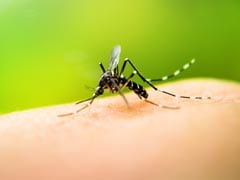-
What is fetal alcohol syndrome?
Fetal alcohol syndrome (FAS) is a condition that is seen in children born to mothers who consume large quantities of alcohol during their pregnancy. Earlier it was believed that these symptoms were caused due to malnutrition, but it was later confirmed that they were due to excessive alcohol consumption. These problems may be physical, mental, or behavioural.
-
How is it caused?
All the nutrients that the mother consumes are transferred to the baby through the placenta. Alcohol also passes from the mother to the baby and hinders the baby’s development. Though researchers have still not reached a consensus on how much alcohol is too much, alcohol consumption, as a rule, is prohibited during pregnancy. The more the amount of alcohol consumed, higher the risk for the fetus.
-
How is it identified?
FAS causes widespread and often irreversible damage to the body and mind of the fetus. The most commonly observed signs:
- Low birth weight
- Small for date babies (full term babies who are smaller than normal)
- Delayed and impaired reflexes seen at birth
- Inability to suckle
- Congenital abnormalities like cleft lip or palate
- Broad, low nasal bridge
- Microcephaly (small head)
- Deformities of the limbs
- Mental retardation
- Behavioural problems such as hyperactivity, extreme nervousness, and poor attention span
Children with the syndrome are born small and also grow slowly. They have a poor appetite and get sick frequently.
-
How is it treated?
Children with FAS require long term treatment that is the same as for other with disabilities. They are educated in special schools and have to be taught how to adjust in the mainstream society. The treatment also depends on the extent of mental retardation and physical disability.
-
How can it be prevented?
Abstinence from alcohol is the only way to ensure that the child is born healthy and is not exposed to risks. Though a little consumption of alcohol is not known to increase the risks significantly, it is always better to abstain completely.
-
How much alcohol is too much?
There is no “safe dose” of alcohol that can be protective or otherwise. Studies have shown that women who drink more than 10 drinks a week are two times more at risk of having a baby with FAS than those who drink half that much. As many as 5-6 drinks per day throughout the pregnancy considerably increases the risk of a baby being born with the condition. The only guarantee against the disease is that no alcohol is consumed.
Drinking is also risky in the second half of pregnancy, when nerve cells form new branches (dendrites), consolidate and eliminate junctions (synapses), and grow the protective sheath known as myelin. Alcohol can distort all these processes and alter the general shape and size of the brain. It may also affect the capacity of the fetus to synthesise and break down neurotransmitters, the chemicals that carry impulses between nerve cells at the synapses. -
What is the prevalence of the disease?
Traditionally, Asians have the least incidence of the condition, but it is steadily increasing. The incidence of the condition seems to be about 1-2 every 1000 live births.

















